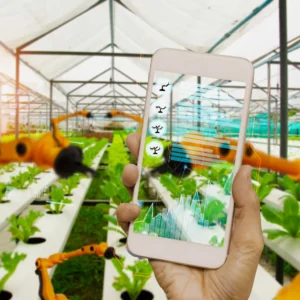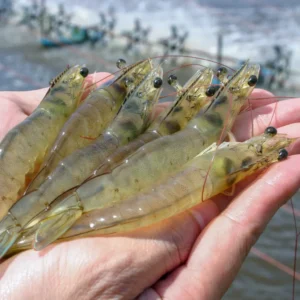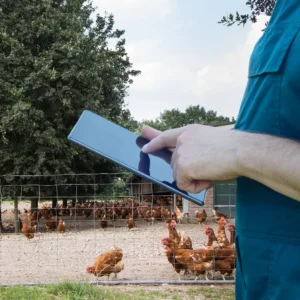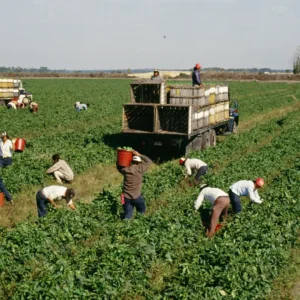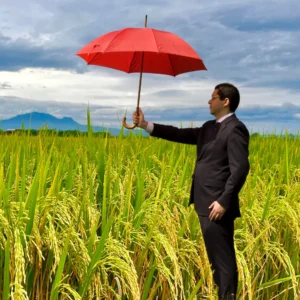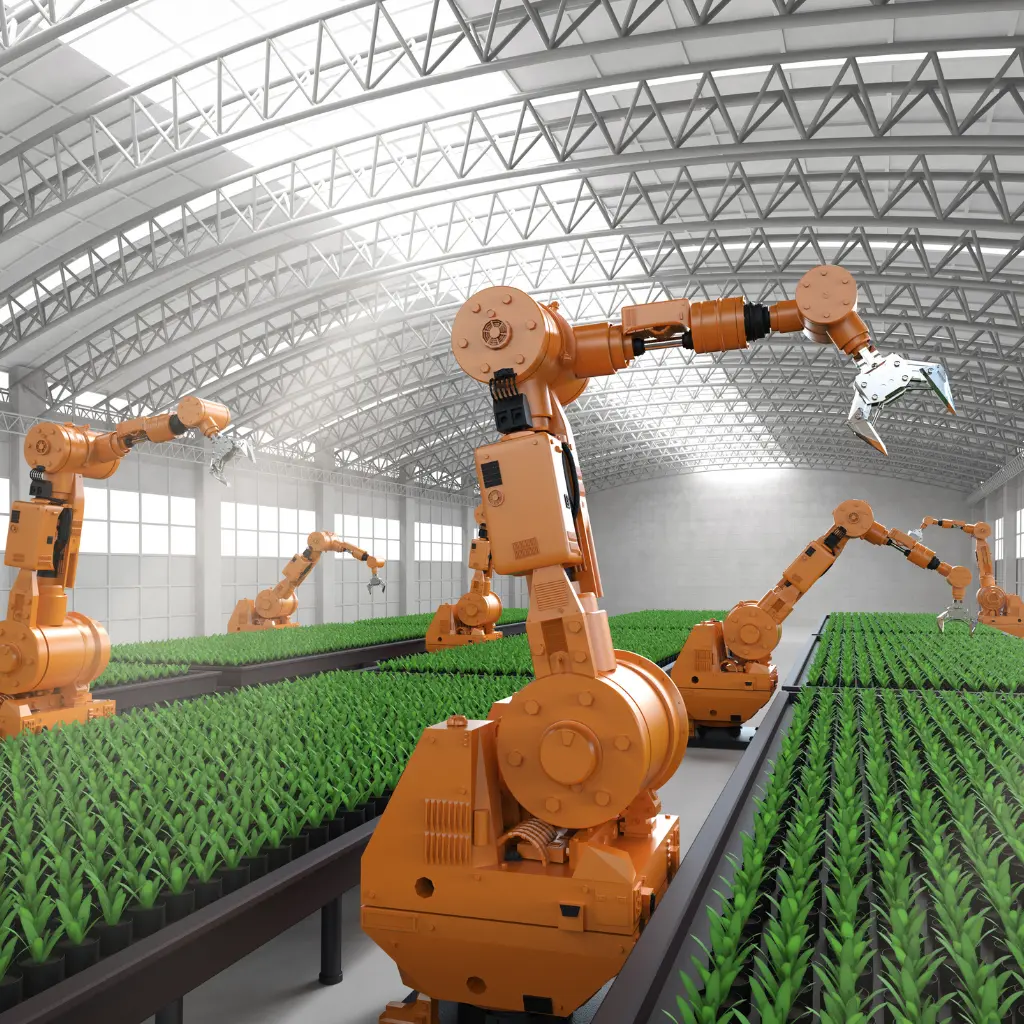
Revolutionizing Farming
The Role of AI in Agricultural Robotics
Welcome to the incredible world of AI in Agricultural Robotics. With the advent of technology, farming now has an array of futuristic innovations at its disposal.
From AI-driven harvest robots contributing to productive farming to drones in precision agriculture ensuring optimized crop health, a revolution is unfolding. Embrace how robotic weed control and autonomous farm vehicles transform traditional practices while livestock monitoring AI improves animal welfare.
Join us as we delve into technology’s ground-breaking role in propelling agriculture to thrilling new standards.
Table of Contents

Arindam Roy
An Automation Consultant with 25+ years of IT Experience
Reaping the Future: Robots in Harvesting
The advent of robotics in agriculture has ushered in a new era of efficiency and productivity. The concept of “Reaping the Future” emphasizes the utilization of robots, particularly in harvesting practices. This technology-driven approach brings many benefits, including precise picking, loss reduction, and round-the-clock operations.
Robotic harvesters, equipped with advanced AI and machine vision, can identify ripeness and gently handle crops, reducing spoilage and wastage. They also minimize the need for manual labour, overcoming labour shortages during peak harvest times.
As these technologies evolve, they’ll ensure a sustainable and affordable food supply in the face of rising global food demands.
Eyes in the Sky: Drones and AI in Crop Monitoring
Farmers are now using drones equipped with artificial intelligence-based technologies for crop monitoring. These ‘eyes in the sky’ offer panoramic aerial views and in-depth analyses.
They accurately map and survey farmlands, assess the health of crops, and spot symptoms of pest attack or disease. Drones can utilize specialized sensors to analyze reflected sunlight from crops and determine their health.
Moreover, AI algorithms can evaluate data collected by drones to predict yields and identify potential issues. This combination of drones and AI is helping farmers optimize their operations, increase productivity and save resources.
Weeding out the Old: AI-Driven Weed Control
Technological advances have stretched to the agricultural sector with AI-driven weed control. This technology can revolutionize farming practices by distinguishing between crops and weeds, thereby helping to eradicate harmful weeds efficiently.
AI weed control systems can meticulously sift through crops, identifying and eliminating only destructive plants, leaving the necessary flora untouched. This could increase crop yield without harmful chemical herbicides, promoting a healthier environment.
Furthermore, AI’s potential lies in its ability to be programmed to recognize new types of weeds over time, improving the sustainability and productivity of farms.
On Auto-Pilot: The Rise of Smart Farm Vehicles
The advent of intelligent farm vehicles epitomizes the intersection of agriculture and AI technology. These machines operate on auto-pilot and are changing the game by revolutionizing conventional farming practices.
Equipped with sensors, GPS, and AI software, these vehicles can perform crucial tasks like planting, fertilizing and harvesting crops without human intervention. Smart tractors can precisely navigate fields, reducing fuel costs and optimizing field coverage.
Drones with infrared cameras act as eyes in the sky, monitoring crop health, optimizing irrigation, and identifying pests. This technology drastically reduces human error and labour costs while increasing productivity.
The rise of intelligent farm vehicles heralds a new era in agriculture: combining traditional knowledge and cutting-edge technology.
Herding with AI: Livestock Surveillance Robots
Livestock management is entering a new era of efficiency and productivity with the integration of AI technology! Herding is now becoming less laborious and more streamlined thanks to the power of AI.
Livestock surveillance robots harness sophisticated sensors and AI-powered algorithms to monitor livestock’s health and overall behaviour. They prove instrumental in detecting early signs of disease or distress, ensuring prompt intervention.
With the power of GPS mapping, these incredible robots can expertly herd animals, direct their every move, and even stay one step ahead of potential predator threats! This advanced technology provides an unobtrusive method of herding, reducing animal stress.
Thus, AI technology is transforming the traditional livestock industry, improving animal welfare, and aiding in the sustainable practice of livestock farming.
Tending the Flocks: AI-Driven Insights in Livestock Health
The adoption of AI in agriculture has paved the way for revolutionary advancements, particularly in livestock health management. Through AI-driven insights, farmers can effectively monitor the health and well-being of their flocks.
Various technologies like smart collars and drones are used to gather data about each animal, including weight, temperature, eating habits, and movement patterns. AI algorithms then analyze this data to identify potential health concerns, like disease outbreaks or breeding issues, often before they become apparent to humans.
This proactive approach enables farmers to provide tailored care to each animal, thus enhancing overall flock health and productivity.
Seeding the Future: Robotic Planting and AI
The advent of high-tech innovations like robotic planting and AI transforms agriculture into a precision-focused sector. Automated planting systems leverage AI algorithms to accurately deposit seeds at exact depths and locations, enhancing efficiency and yield potential.
AI-driven platforms analyze weather conditions, soil health, and crop growth to optimize planting strategies. Robots with radar sensors and computer vision perform operations day and night, overcoming human limitations.
Moreover, AI-powered drones scan fields, identify pests, and administer necessary remedies. These succeed in seeding a sustainable, less-resource-intensive future for agriculture, allowing us to effectively cater to our planet’s growing food demand.
Beyond the Horizon: Expanding Farm Boundaries with AI and Robots
The emergence of AI and robotics in agricultural practices is revolutionizing farming, drastically expanding the physical and efficiency boundaries. Robots equipped with AI technology can now perform tedious tasks, such as weeding, pruning, and harvesting, thereby cutting down manual labour and reducing costs.
Advanced AI-driven drones can analyze crop health, inspect fields, detect pests, and spray pesticides with precision, ensuring optimum utilization of resources. The integration of AI further enhances the potential of robotics through predictive analysis and decision-making capabilities, shaping a future where farms could run themselves.
This transformation is beyond the horizon, catalyzing a new high-tech, sustainable farming era.
Farm Tasks: Easier and Efficient with Robotics
Integrating robotics in farming drastically transforms the sector by making strenuous tasks effortless and dramatically efficient. Robots are the ultimate multitaskers! They can plant, water, and harvest crops precisely and tirelessly.
And that’s not all – they can even milk cows! With these incredible machines on the job, the possibilities are endless. Unmanned Aerial Vehicles (UAVs) monitor crop health and track livestock, while robotic weeders eliminate pests effortlessly. Robotics help to streamline farming operations, reduce labour dependency, better crop management, and increase overall productivity. T
he advanced artificial intelligence capabilities ensure highly accurate outcomes, substantially cutting down on resource waste. Indeed, robotics promises a revolutionary future for the farm industry.
From Ground to Air: Integrating Drones and Robots in Agriculture
Today, agriculture isn’t just about tractors and manual labour. Technologies incorporating drones and robotics are revolutionizing farming practices, making agriculture more efficient and systematic.
Drones provide aerial imaging, helping farmers with crop monitoring, irrigation management, and pest detection. On the ground, robotic machinery aids in seeding, harvesting, and sorting crops. Integrating these technologies can lead to increased yields, reduced waste, and decreased use of resources.
Though initial investments may be high, the long-term benefits, such as improved productivity, cost savings, and decreased environmental impact, can significantly enhance agriculture’s sustainability.
Conclusion
The integration of AI in Agricultural Robotics heralds a new era for farming. With increased efficiency, sustainability, and precision, these technological advancements are transforming agricultural practices and ensuring food security for a rising global population.
As we move forward, it’s evident that the fusion of AI and robotics will play a pivotal role in shaping the future of agriculture, making it more resilient, productive, and in tune with environmental needs.
Related Articles
- AI in Smart Agriculture – Precision Farming
- AI in Modern Aquaculture – Underwater Harvest
- AI in Animal Farming – Tech Meets Livestock
- AI in Sustainable Agriculture – Green Gains
- AI in Agricultural Supply Chain – From Farm to Table
- AI in Agricultural Biotechnology – Bespoke Crops
- AI in Agri-Finance and Insurance – Safeguarding the Harvest
- AI in Farming Tools and Machinery – Equipped for the Future
- The AI Urban Farming Revolution – Cultivating Cities
- AI in Agricultural Automation – Robotic Revolution
- AI in Post-Harvest Care – Beyond the Harvest
- The Surge of Agri-Tech AI Platforms – Digital Farming
- AI in Combatting Crop Diseases – Healthy Harvests
- AI in Boosting Organic Farming – Natural Nurturing
- AI in Agricultural Supply Chain Management
- AI in Precision Agriculture: Farms for a Sustainable Future
- AI in Crop Forecasting and Analysis: New Agricultural Era
- AI in Smart Greenhouses: Revolutionizing Sustainable Agriculture
Forbes Articles related to AI usage in the Agriculture Sector:

